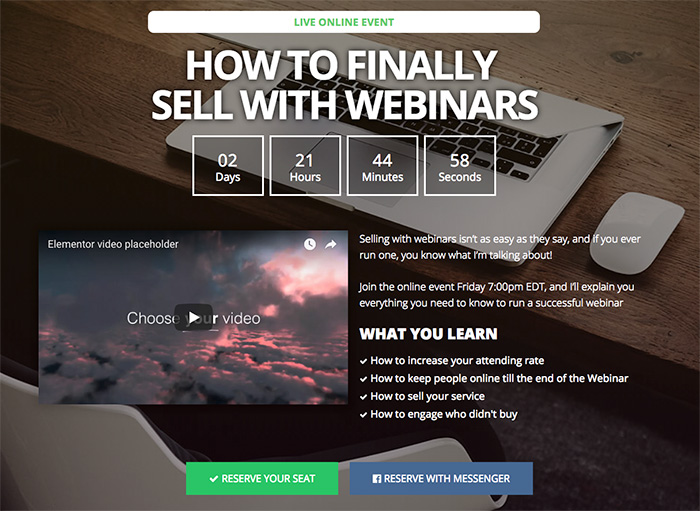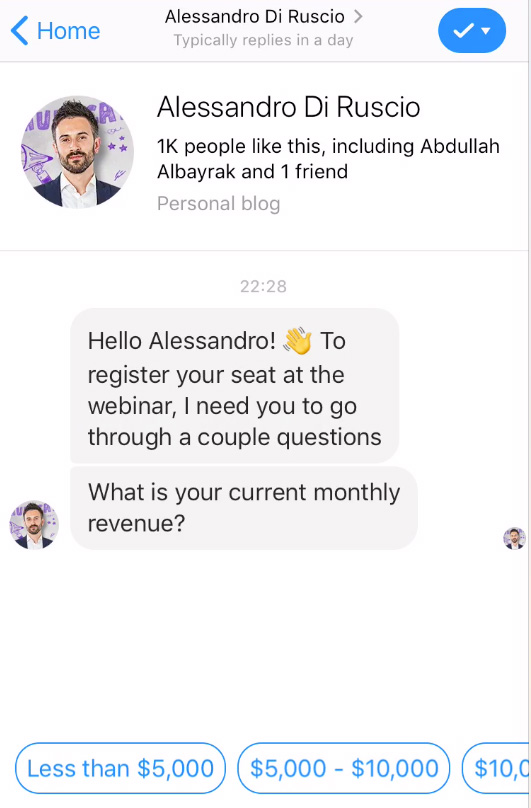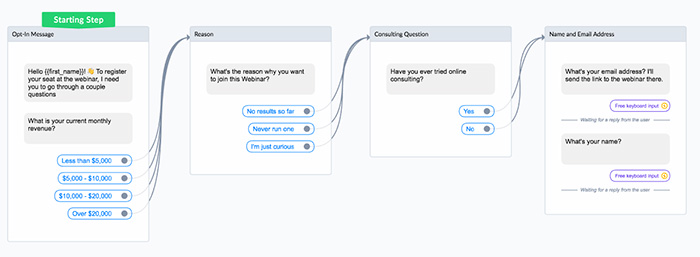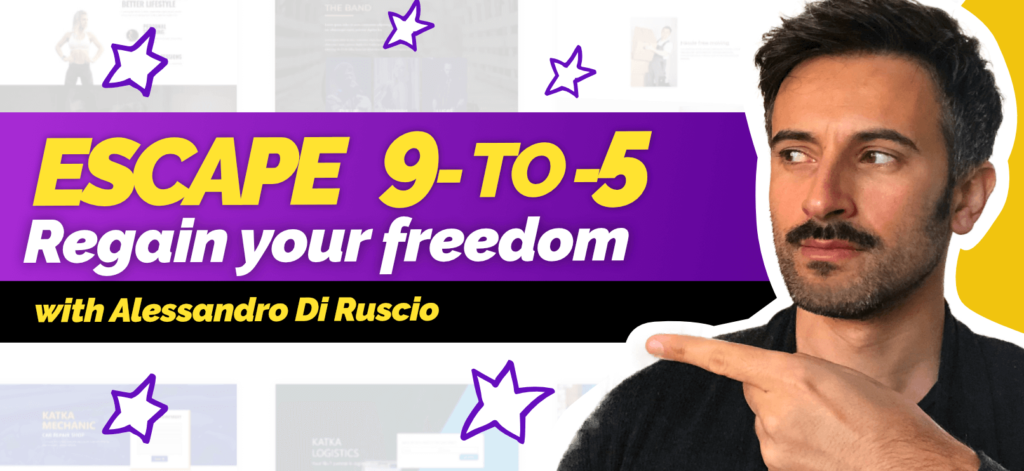Weird title uh? How can I get a conversion without an email form on my landing page?
In this article, I’m going to show you the method that brought the conversion rate of my page from 24% using a form, to 42% removing it.
Doesn’t make sense to you? Wait for it!
Personally, I’ve never seen this method applied by anyone online, and it’s weird cause it almost doubled my conversion rate.
Before we start, I want to assure you that this system I’m about to reveal, is totally free and quick to apply to your pages.
A close look to the Landing Page
The one below is the landing page, and as you can see, there’s no form on it.

You can instead spot 2 buttons at the bottom. Neither of these buttons triggers a popup with a form.
Let’s take a look at the first button.

If the user clicks on it, he’s redirected to a page I created with Typeform.

Typeform is a platform that allows you to create surveys and facilitate the collection of user’s details compared to email forms.
That’s the reason why surveys work a lot better than forms. People don’t like to be mere spectators on a webinar. They want to interact, and they want to be heard.
As you can see on the screenshot above, I’m honestly curious about my audience, I can get precious information about their preferences, and just at the end, I’ll ask for their name and email address.

My first impression with surveys was “no one will ever reach the end of my survey. Why should someone go through my questions?”
Well, take a look at the survey stats.

83% of the people who started the survey, got till the end. Why is this percentage so high?
First of all, I’ve simplified the answering method. The user doesn’t have to fill any form, but he just needs to click on the predefined options.
The second reason is about time investment. It’s natural for human beings to finish what they started, especially if the process involved a personal contribution. If I’ve already replied to 4 or 5 questions, I’m pushed to leave my name and email address instead of closing the page.
The Messenger Option
Let’s dive into the second button on the landing page.

This one allows the user to sign for the webinar via Messenger.
Facebook Messenger grew up a lot in the last years, and it confirms to be the perfect tool to reach your subscribers, side by side with emails.
When the user clicks on this button, he receives a new message straight into the Facebook chat.

As you can see I ask the same questions I ask on Typeform, but this time via a different channel.
I use Manychat to create automated surveys for my Facebook list, and as Typeform, it has a free plan that’s enough to test the tool.
At the end of the questionnaire, I request the email address that I will use to send the webinar invitation link.

The great thing is that I’ll be able to send the webinar reminders via email and via messenger. No need to highlight how powerful this is to raise your webinar attending rate.
If you want some inspiration to create your surveys, I’ve built a PDF with my best 5 running on Typeform and Messenger, on “webinar registration”, “post-webinar survey”, “lead generation”, “consulting request”, “contact form”.
That’s a great take away that you can download clicking on the banner below.
 [/thrive_2step]
[/thrive_2step]Interaction and Engagement
Let me address the last question you may have.
Why using both Typeform and Messenger on the landing page?
Why not choosing a single method?
The reason is purely psychological: giving 2 choices is always better than giving a single one. Interaction brings engagement.
That’s the reason why having a form in your landing page isn’t always the best choice. If that’s the only way to sign for a webinar or a newsletter, my only other option is to leave the page.
In conclusion, I’m not saying you should throw away forms. I still have landing pages with email forms that have an excellent opt-in rate. Instead, I think you should always split test your pages and try new methods to grow your user base even with they look absurd at first sight.
As usual, give me your feedback in the comments. See you in the next one!
By the way, if you’re interested in growing your webinar attending rate, you’re definitely interested



